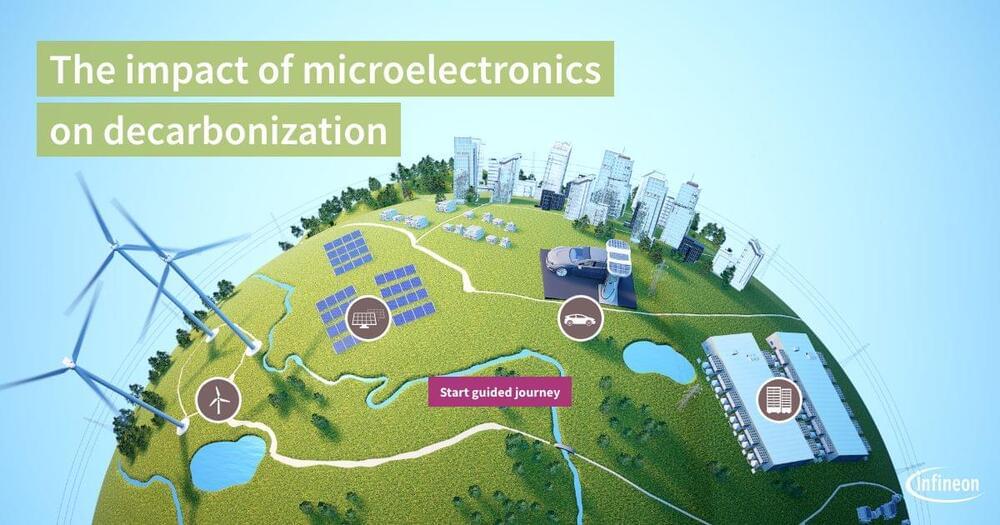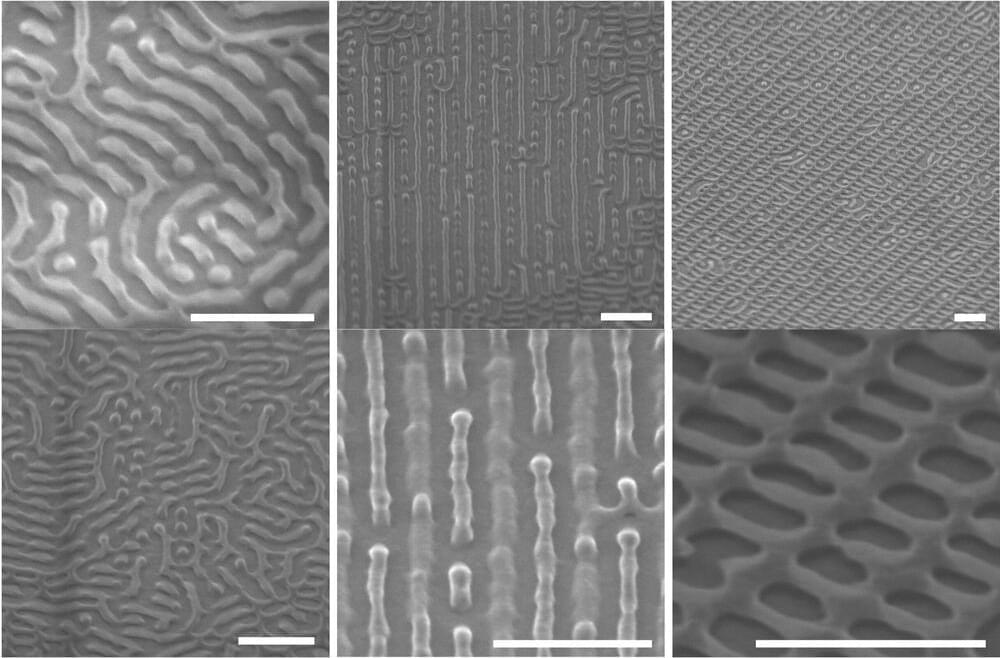Real-world science may show that the brain-controlling zombie Fungi from The Last Of Us franchise may actually be a threat to humanity.



Climate change is the biggest challenge of our time. To slow down global warming, we need to rethink how we generate and consume energy. Facing significant structural changes in supply and demand, we are in the middle of an energy transition with a strong need for action.
To reach a net zero economy by 2050 we have to swiftly replace fossil fuels in power generation with renewable, clean and secure sources. At the same time technologies powered by fossil-fuels must be replaced by electrified applications such as those seen in electric vehicles or heat pumps. Microelectronics plays a decisive role in respective applications.
Infineon’s semiconductor solutions enable the provision of green energy as well as the electrification of applications in the industrial, mobility and consumer sectors. Our semiconductor solutions are vital to decarbonization, they are key elements in creating a better future.

Words by pau aleikum & marta handenawer.
This article started as a discussion between friends, sparked by the release of ChatGPT last December. Instantly, our minds were racing with the massive amount of tremendously stupid and not-so-stupid applications it could have for our work at Domestic Data Streamers. It is clear that AI is a valuable tool you could use to finish assignments more quickly, but what would be lost in that process? Using ChatGPT feels like cheating; using a shortcut to finish your work, it’s so easy that it can feel as if you are not working at all. This obviously comes with a cost. If you don’t write those words, you are less likely to remember them and less likely to internalize knowledge or connect it to other fields of knowledge you already have. And that, friends, is a problem for education. The Atlantic recently declared that “The College Essay Is Dead,” and although I disagree, this calls for further exploration.
The use of ChatGPT to write academic projects has been a source of significant concern in academia. Three of the four universities we work with have already sent out emails asking that teachers acknowledge the existence of this technology and prepare for it. This is the next phase in our journey from manual calculation to technology-aided information recall, just as we evolved from adding up numbers in our minds to calculators and from basic orientation to Google Maps.


A new study led by scientists at Rutgers University has uncovered new insights into the underlying brain mechanisms of autism spectrum disorder.
Autism Spectrum Disorder (ASD) is a complex developmental disorder that affects how a person communicates and interacts with others. It is characterized by difficulty with social communication and interaction, as well as repetitive behaviors and interests. ASD can range from mild to severe, and individuals with ASD may have a wide range of abilities and challenges. It is a spectrum disorder because the symptoms and characteristics of ASD can vary widely from person to person. Some people with ASD are highly skilled in certain areas, such as music or math, while others may have significant learning disabilities.
Our immune system is built to detect foreign invaders, pathogens, and debris, and then eliminate them. So how does it deal with the trillions of microbial cells that make a home for themselves in our gastrointestinal tract? Scientists have now found an answer to that question, and the evidence they revealed has also changed what we know about the interactions between immune receptors and a protein that helps move bacteria around, called flagellin. The findings have been reported in Science Immunology.
There are many beneficial microbes in the human gut microbiome, and we need many of those microorganisms to help us break down food and absorb nutrients, for example. But there are also pathogenic gut germs. The immune system can recognize those pathogenic microbes with different receptors, one of which is called toll-like receptor 5 (TLR5). TLR5 attaches to flagellin, a protein found in the flagellum of bacteria, a structure that propels bacterial cells. When TLR5 binds to flagellin, an inflammatory response is triggered.

Bats (Mammalia: Chiroptera) serve as natural reservoirs for many zoonotic pathogens worldwide, including vector-borne pathogens. However, bat-associated parasitic arthropods and their microbiota are thus far not thoroughly described in many regions across the globe, nor is their role in the spillover of pathogens to other vertebrate species well understood. Basic epidemiological research is needed to disentangle the complex ecological interactions among bats, their specific ectoparasites and microorganisms they harbor. Some countries, such as Ukraine, are particularly data-deficient in this respect as the ectoparasitic fauna is poorly documented there and has never been screened for the presence of medically important microorganisms. Therefore, the aims of this study were to provide first data on this topic.
A total of 239 arthropod specimens were collected from bats. They belonged to several major groups of external parasites, including soft ticks, fleas, and nycteribiid flies from six chiropteran species in Northeastern Ukraine. The ectoparasites were individually screened for the presence of DNA of Rickettsia spp., Anaplasma/Ehrlichia spp., Bartonella spp., Borrelia spp., and Babesia spp. with conventional PCRs. Positive samples were amplified at several loci, sequenced for species identification, and subjected to phylogenetic analysis.
Rickettsia DNA was detected exclusively in specimens of the soft tick, Carios vespertilionis (7 out of 43 or 16.3%). Sequencing and phylogenetic analysis revealed high similarity to sequences from Rickettsia parkeri and several other Rickettsia species. Bacteria from the family Anaplasma taceae were detected in all groups of the ectoparasites (51%, 122/239 samples), belonging to the genera Anaplasma, Ehrlichia, and Wolbachia. The detection of Bartonella spp. was successful only in fleas (Nycteridopsylla eusarca) and bat flies (Nycteribia koleantii, N. pedicularia), representing 12.1% (29÷239) of the collected ectoparasites. No DNA of Babesia or Borrelia species was identified in the samples.

Geert Lovink is a Dutch media theorist, internet critic, and author of Dark Fiber (2002), My First Recession (2003), Zero Comments (2007), Networks Without a Cause (2012), Social Media Abyss (2016), Sad by Design (2019), Stuck on the Platform (2022) and Extinction Internet (2022). In 2004 he founded the Institute of Network Cultures at the Amsterdam University of Applied Sciences. From 2004–2012 he was associate professor in the new media program of Media Studies, University of Amsterdam. In 2005–2006 he was a fellow at the Institute of Advanced Study in Berlin. From 2007–2017 he was Professor of Media Theory at the European Graduate School. In December 2021 Geert Lovink was appointed Professor of Art and Network Cultures at the Art History Department, Faculty of Humanities of the University of Amsterdam.
In this interview, we talked with Geert Lovink about his latest essay Extinction Internet, Mark Fisher’s hauntology, the memory of Bernard Stiegler, the XR movement, and the phantoms of accelerationism.
Alessandro Sbordoni: Today, platform realism makes us feel like another internet is no longer possible. In your essay, Extinction Internet, you argue that the internet is ending and that it is time for theorists, artists, activists, designers, and developers to imagine what is after the end of the internet as we know it. What can we do as internet users?

Powered by supermassive black holes swallowing matter in the centers of galaxies, active galactic nuclei are the most powerful compact steady sources of energy in the universe. The brightest active galactic nuclei have long been known to far outshine the combined light of the billions of stars in their host galaxies.
A new study indicates that scientists have substantially underestimated the energy output of these objects by not recognizing the extent to which their light is dimmed by dust.
“When there are intervening small particles along our line of sight, this makes things behind them look dimmer. We see this at sunset on any clear day when the sun looks fainter,” said Martin Gaskell, a research associate in astronomy and astrophysics at UC Santa Cruz.

By Brookhaven National Laboratory
Scientists at the U.S. Department of Energy’s (DOE) Brookhaven National Laboratory have successfully demonstrated that autonomous methods can discover new materials. The artificial intelligence (AI)-driven technique led to the discovery of three new nanostructures, including a first-of-its-kind nanoscale “ladder.” The research was published today in Science Advances…
The newly discovered structures were formed by a process called self-assembly, in which a material’s molecules organize themselves into unique patterns. Scientists at Brookhaven’s Center for Functional Nanomaterials (CFN) are experts at directing the self-assembly process, creating templates for materials to form desirable arrangements for applications in microelectronics, catalysis, and more. Their discovery of the nanoscale ladder and other new structures further widens the scope of self-assembly’s applications.